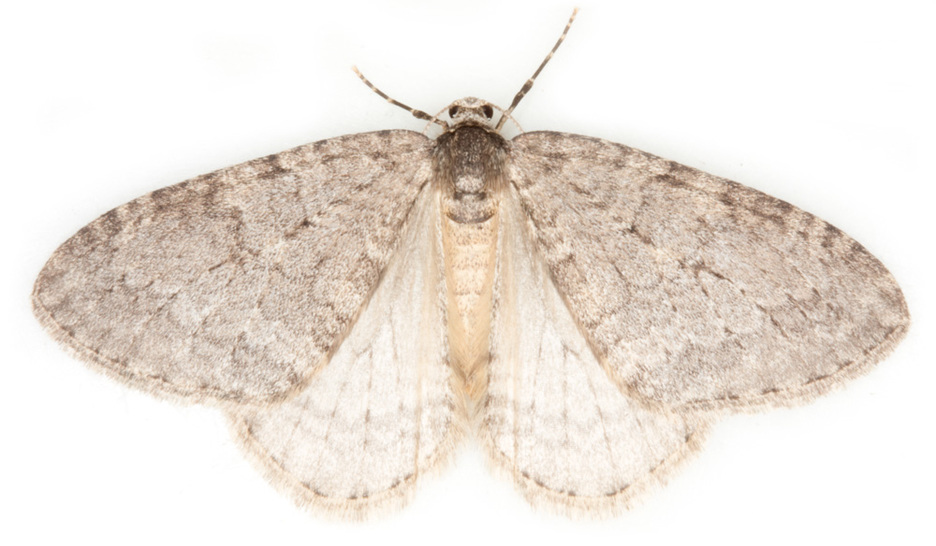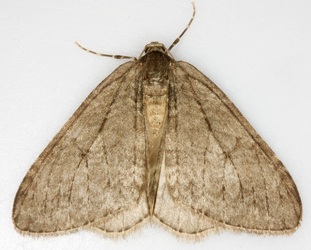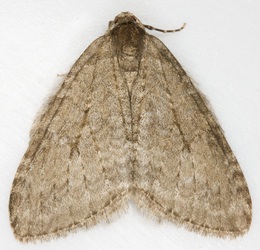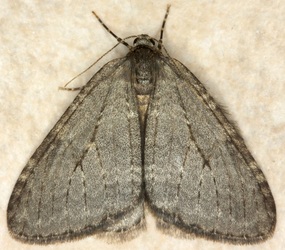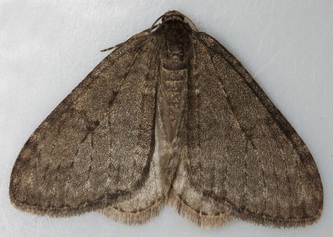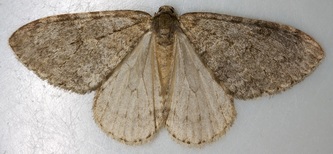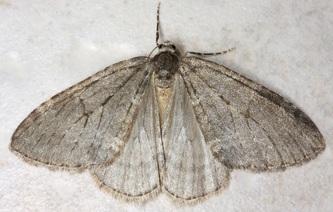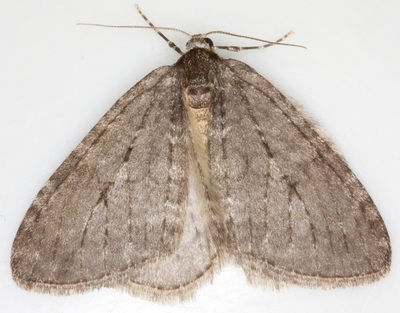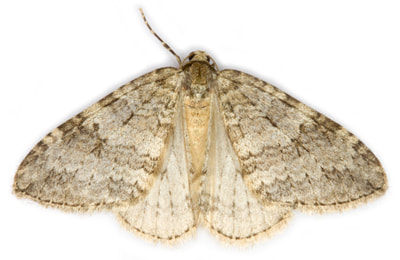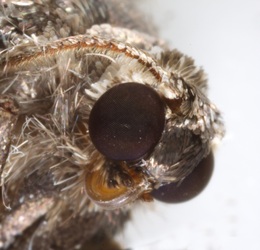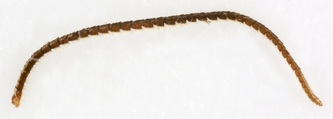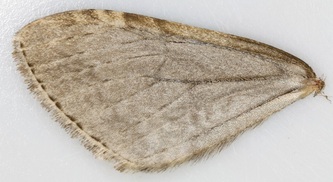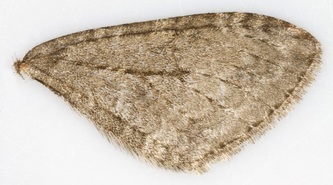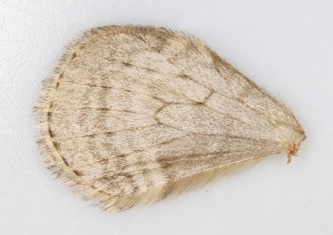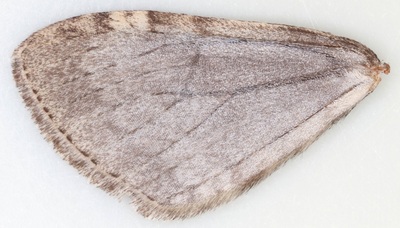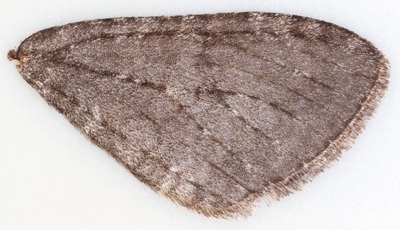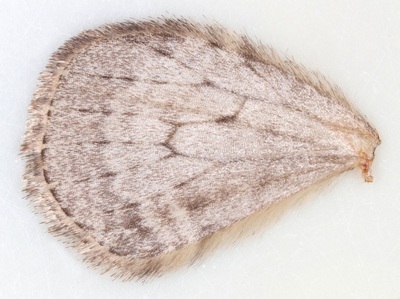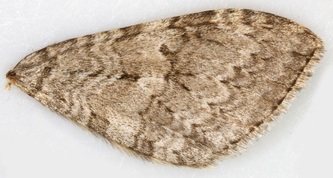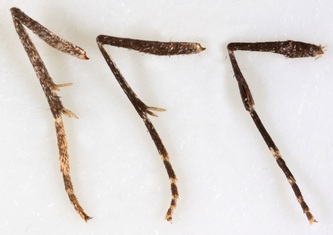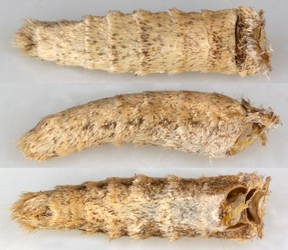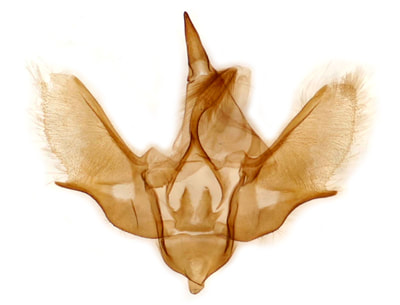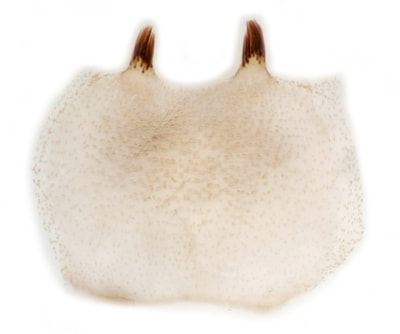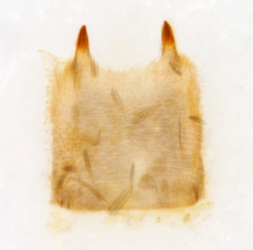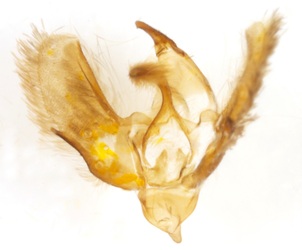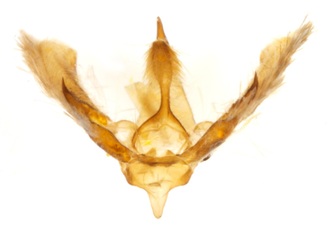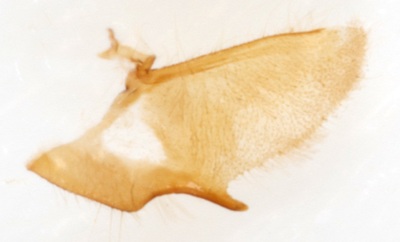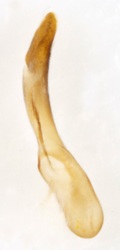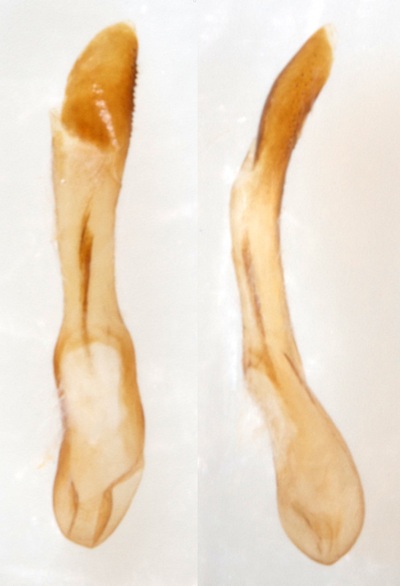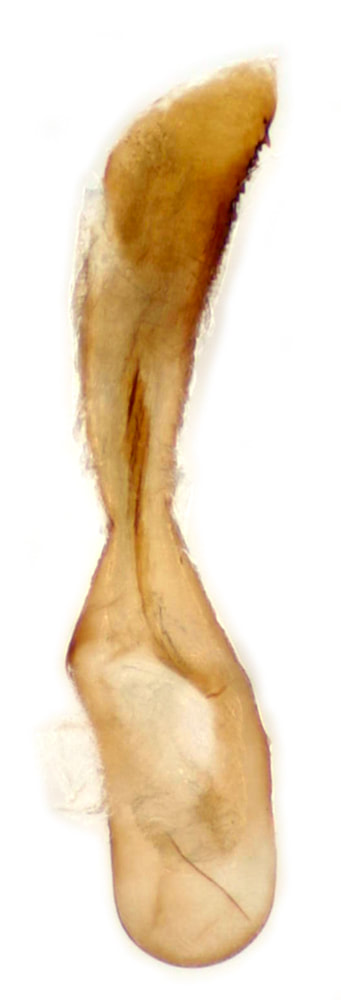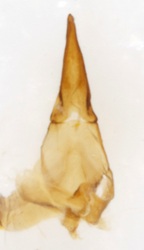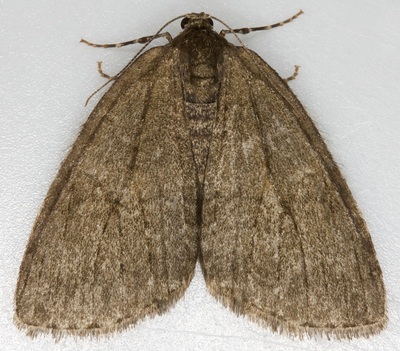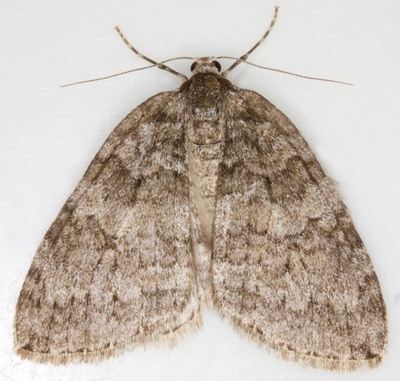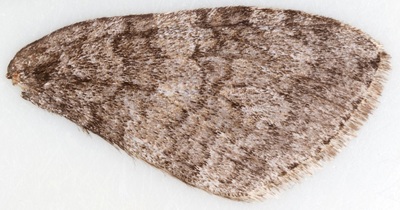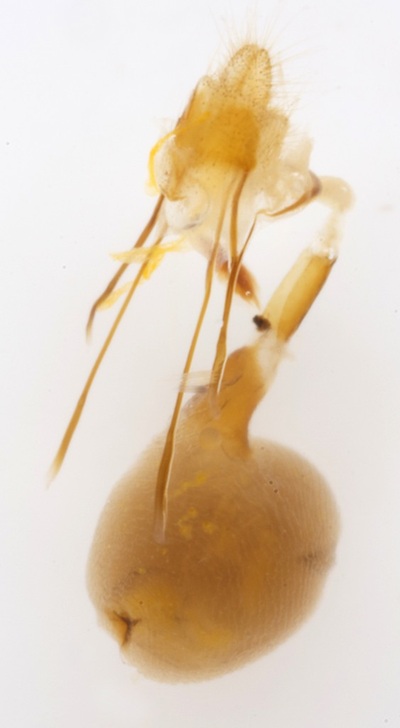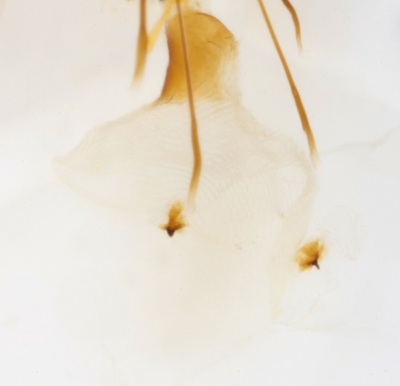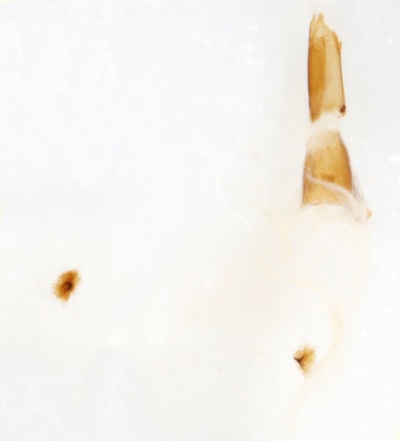70.107 Epirrita dilutata (November Moth)
fw: 15-20mm; (Sep) Oct-Nov; broad-leaved trees & shrubs; common throughout GB
Synonym: Oporinia dilutata (Pierce)
Synonym: Oporinia dilutata (Pierce)
ID: The 4 Epirrita species are similar. E.filigrammaria (Small Autumnal Moth) should not pose a problem as it flies earlier (Aug-Sep) is smaller (fw 14-18mm) and is confined to moorland habitat. The other 3 species all show a similar range of variability in colour from light to dark grey-brown and in the amount of banding from none to distinct. At rest females can be distinguished from males by their more prominent 'shoulders'. Males require examination of the 8th sternite and (according to the Difficult Species Guide) females of these three species cannot be distinguished reliably. Waring comments that when a central forewing spot can be discerned in E.dilutata the proximal margin of the median fascia runs through the spot while in E.christyi (Pale November Moth) and E.autumnata (Autumnal Moth) the spot is clearly proximal to the median fascia. Uniformly dark Epirrita moths are usually E.dilutata unless there is a conspicuous 'V' mark at the forking of veins 3&4 (?) when E.autumnata is suggested.
Male 8th sternite: The posterior margin of the 8th sternite shows small 'teeth' (octavals) in the males of all three species. In E.dilutata these teeth are widely spaced (average 0.43mm according to Waring) and fairly long; in E.christyi they are much closer together (0.23mm); in E.autumnata the teeth are widely spaced but very short. (Waring draws the teeth in E.dilutata about twice the length of those in E.christyi, but the images at dissection group show the teeth in E.christyi longer than those in E.dilutata).
Male genitalia: The ventral margin of the valve shows a strong spur in both E.dilutata and E.christyi but not in E.autumnata or E.filigrammaria
Female genitalia: Differences in the female genitalia are not described by Waring and only E.dilutata is shown at Dissection group. Pierce gives some description but this is not very helpful and probably unreliable. Each species has 2 signa in the bursa copulatrix. Those of E.dilutata and E.filigrammaria are "discoid, scobinate"; those of E.christyi "small"; and those of E.autumnata "distinctly smaller".
Male 8th sternite: The posterior margin of the 8th sternite shows small 'teeth' (octavals) in the males of all three species. In E.dilutata these teeth are widely spaced (average 0.43mm according to Waring) and fairly long; in E.christyi they are much closer together (0.23mm); in E.autumnata the teeth are widely spaced but very short. (Waring draws the teeth in E.dilutata about twice the length of those in E.christyi, but the images at dissection group show the teeth in E.christyi longer than those in E.dilutata).
Male genitalia: The ventral margin of the valve shows a strong spur in both E.dilutata and E.christyi but not in E.autumnata or E.filigrammaria
Female genitalia: Differences in the female genitalia are not described by Waring and only E.dilutata is shown at Dissection group. Pierce gives some description but this is not very helpful and probably unreliable. Each species has 2 signa in the bursa copulatrix. Those of E.dilutata and E.filigrammaria are "discoid, scobinate"; those of E.christyi "small"; and those of E.autumnata "distinctly smaller".
Males
Dissection
Male genitalia
Females
§2 identified on basis that all male Epirrita specimens from Foulness have been E.diltutata
§11 identified on position of discal dot (male E.dilutata x1 and E.autumnata x2 obtained from same site same night)
§2 identified on basis that all male Epirrita specimens from Foulness have been E.diltutata
§11 identified on position of discal dot (male E.dilutata x1 and E.autumnata x2 obtained from same site same night)
Female genitalia
|
§1 Foulness, Essex; 17/10/2008; male; fw 18mm
§2 Foulness, Essex; 25/10/2009; female §3 Strumpshaw Fen, Norfolk; 08/10/2010; male; fw 18.5mm §4 Foulness, Essex; 17/10/2011; male §5 Strumpshaw Fen, Norfolk; 18/10/2011; male §6 Strumpshaw Fen, Norfolk; 19/10/2011; male; 18.6mm §7 Strumpshaw Fen, Norfolk; 19/10/2011; male §8 Foulness, Essex; 23/10/2011; male §9 Strumpshaw Fen, Norfolk; 01/11/2014; male; fw 18.1mm All images © Chris Lewis |
§10 Dodd Wood, Cumbria; 11/11/2014; male; fw 18.1mm
§11 Dodd Wood, Cumbria; 10/11/2014; female; fw 17.1mm §12 Pound Wood, Essex; 01/11/2015; male §13 Bampton Grange, Cumbria; 10/10/2017; male; fw 17.8mm |
Page published 29/06/2013 (§1-8) | §9 added 08/11/2014 | §10&11 added 02/12/2014 | §12 added 24/11/2015 | §13 added 20/11/2017
